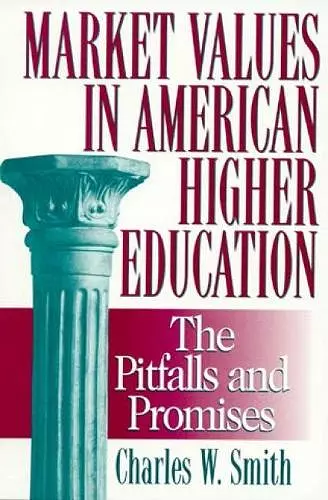Market Values in American Higher Education
Pitfalls and Promises
Format:Hardback
Publisher:Rowman & Littlefield
Currently unavailable, our supplier has not provided us a restock date

Standing apart from the spate of books on the rising cost of higher education, Charles W. Smith's provocative new book, Market Values in American Higher Education: The Pitfalls and Promises argues that current financial problems in higher education are not tied to such things as tenure, sabbaticals, overemphasis on research, and curriculum changes. Rather, they are due to counterproductive and expensive efforts to impose hierarchical corporate managerial structures, slash and burn cost reduction schemes, and costly pursuits of phantom revenue sources—be they highly visible new programs, grants, or even gifts that actually need to be subsidized by the institution. What needs to be done, according to Smith, is to reaffirm what is already known: Higher education is expensive. Market Values in American Higher Education costs out various aspects of American higher education, explores what we are willing to pay, who should pay, and lays out new and different ways of thinking about the funding of higher education for future generations.
Is American higher education rife with inefficiency and mismanagement? Blunt, clever, factual, and backed by years of both faculty and administrative experience, Charles W. Smith effectively rebuts these widespread charges against higher education. Market Values in American Higher Education should transform the national debate on these issues. -- Charles Karelis, President of Colgate University
In a time in which self-proclaimed saviors of higher education rant and even publish their untutored opinions of how to “fix” universities, Charles W. Smith’s experience as a faculty member and administrator gives his “antidotal” analysis the ring of truth. Higher education, like medicine, should be left to the professionals, and Smith shows how complex and how fascinating the issues can be. -- Shirley Strum Kenny, President of SUNY, Stony Brook
Smith's lesson is provocative and simple. Smith is at his best when debunking several analyses of what ails higher education. Know your mission well, and be prepared to convince students of both its intrinsic and economic worth, Smith suggests—advice as valuable to faculty and administrators at the University of Phoenix as is to those at Amherst College. * University Business *
In a well-conceived analyses of aspects in influencing the operation of higher education institutions in America, the author draws from his experience as a manager and an academic. * Higher Education Review *
The book is useful because Smith provides a lucid, well-constructed analysis of how higher education is a different organizational animal. Moreover, his defense of what higher education does well rings true, because he includes ideas and examples of how higher education can manage itself better. * Journal of Higher Education *
Smith's book is an antidote to the strident criticism distracting American higher education today. He shows that the cost of higher education is not unreasonable and that many of the academy's problems and costs arise from imposing administrative structures that are fundamentally incompatible with the mission of academic institutions. -- Douglas Bennet, President of Wesleyan University, Connecticut
ISBN: 9780847695638
Dimensions: 234mm x 157mm x 20mm
Weight: 404g
250 pages